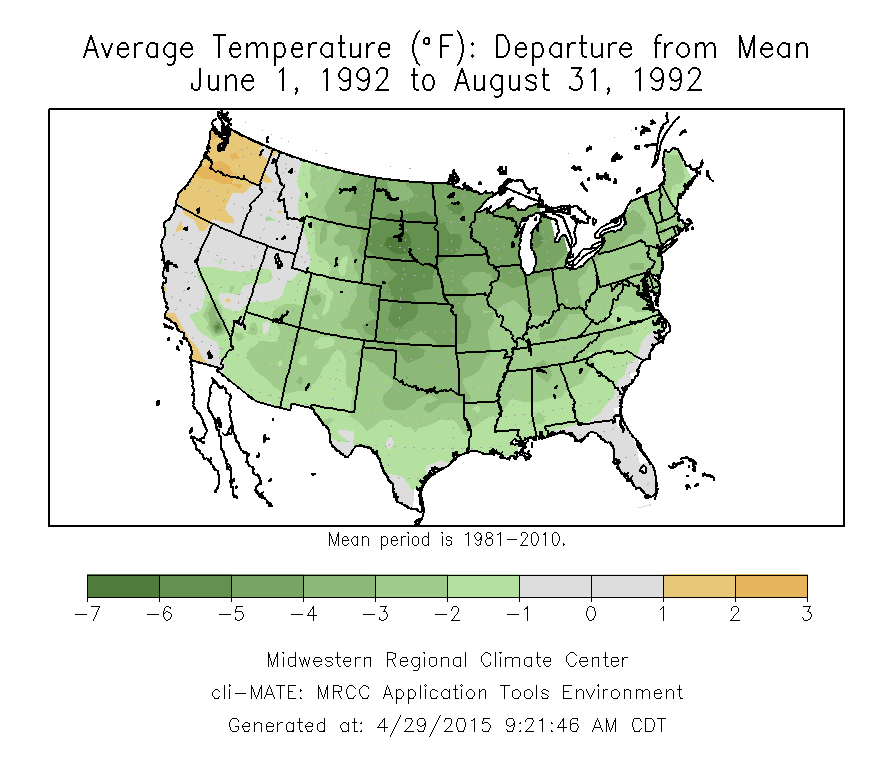When I give talks on climate and climate change, I often get questions about volcanoes and their impact on our climate. The Washington Post had a recent article on the subject, mentioning the famous eruption of Tambora in 1815, which in 1816 led to the year without a summer in the eastern US. It probably had impacts on Illinois but we had no widespread observations in place at the time.
The one I remember the best was Mount Pinatubo. The following summer after that eruption was exceptionally cool across the US and around the world.




